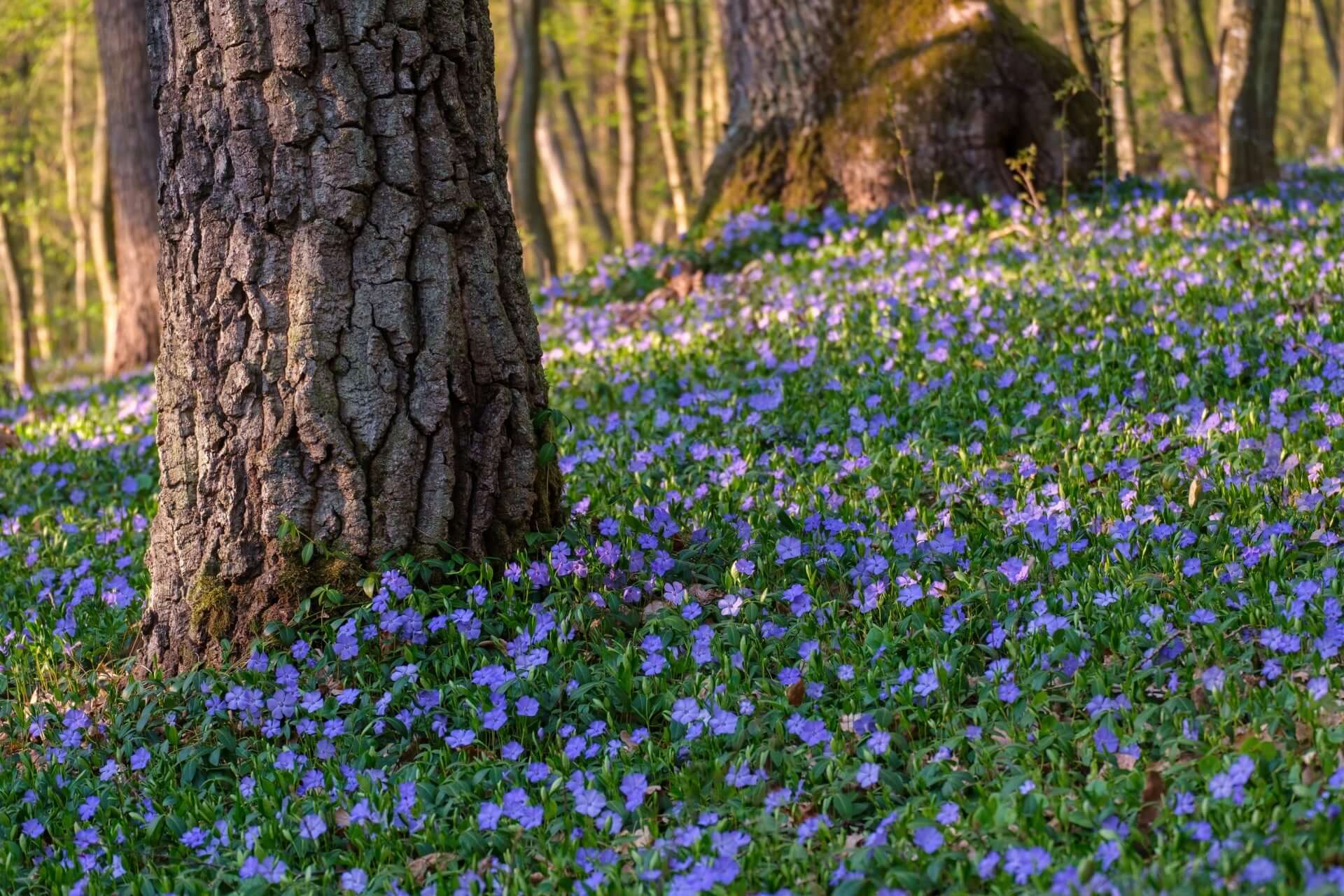The periwinkle plant, known for its vibrant blue and purple hues, gives any garden a sense of serenity. This perennial ground cover is well-loved for its ability to thrive in diverse conditions while adding a lush, low-growing carpet of color and texture. If you're considering adding periwinkle to your garden, understanding the best planting time and care requirements will ensure that it flourishes and remains a beautiful part of your landscape for years.
When should I plant periwinkle?
Periwinkle plants thrive when planted in cooler weather, making early spring or fall ideal times to introduce them to your garden. These seasons provide moderate temperatures and ample moisture that allow the roots to establish before the more extreme heat or cold sets in. Planting in the spring gives periwinkle a head start, allowing it to spread and become well-established before summer, whereas planting in the fall allows the plant to settle in during the cooler months and prepare for a robust growth spurt in spring.
Choosing the proper planting time is critical because it lets the plant concentrate on root development, essential for healthy spreading. If you are in a warmer climate, fall is particularly beneficial as the roots can take hold during mild winter conditions without the stress of extreme heat. On the other hand, in cooler climates, early spring is a better time, ensuring that periwinkle has plenty of time to establish itself before winter.
Are creeping myrtle and periwinkle the same?
Creeping myrtle and periwinkle are indeed the same plant, although they are often referred to by different names depending on where you are. Periwinkle is the more common name, especially in gardening circles, but creeping myrtle refers to its low, ground-hugging growth habit, which makes it an excellent choice for filling in garden beds and slopes and even as an alternative to grass in shaded areas. Both names describe the same resilient, trailing vine that produces those iconic small, star-shaped flowers in shades of blue and purple.
The botanical name for this plant is Vinca minor, and it belongs to the Apocynaceae family. Although many cousins share similar characteristics, Vinca minor is distinct in its ability to adapt to a wide range of conditions. Whether you call it creeping myrtle or periwinkle, this plant will perform similarly in the garden, providing ground cover that is both beautiful and functional.
Does periwinkle spread quickly?
Periwinkle is known for its ability to spread rapidly, creating a dense mat of foliage that covers the ground efficiently. This quality makes it an excellent ground cover option for places where you want to control soil erosion or suppress weeds. The plant's trailing stems root at the nodes, which means that wherever the stem touches the soil, a new plant can take root, allowing periwinkle to expand its reach across your garden.

Its rapid growth, especially in favorable conditions like partial shade and well-drained soil, allows periwinkle to cover large areas quickly. Once established, it can fill garden beds and cascade over walls or other obstacles, creating a soft, flowing effect. However, it's essential to guide its growth and trim it as needed to ensure it doesn't outgrow its intended space. While periwinkle can quickly take hold, it is a low-maintenance plant once established, requiring only occasional pruning to keep it tidy and contained.
What is the difference between a periwinkle and a Vinca?
The terms periwinkle and Vinca are often used interchangeably. Vinca minor is the botanical name for what is commonly known as periwinkle or creeping myrtle. It is a hardy perennial ground cover that thrives in temperate climates and produces delicate blue or purple flowers in early spring. This plant is known for its ability to spread across the ground, creating a dense, evergreen mat.
On the other hand, Vinca major is another plant in the same family but is often called "greater periwinkle" due to its larger size. Vinca Major produces larger leaves and flowers than Vinca Minor and is frequently used in more expansive landscaping projects. Both plants share many characteristics, such as their trailing growth habits and the iconic flowers, but Vinca major tends to be a bit more vigorous and is better suited for larger spaces.
In addition to these two, there's also the annual Vinca, known as Catharanthus roseus, a tropical plant that thrives in warm climates. Catharanthus roseus is commonly used in flower beds and containers as a seasonal plant, unlike the perennial Vinca minor and Vinca major. It is appreciated for its bright pink, white, or red blooms throughout the summer.
Knowing the difference between these plants can help you choose the suitable variety for your needs when planning your garden. If you're looking for a perennial ground cover that will return year after year, Vinca minor or periwinkle is your best bet. Vinca major may be more appropriate if you need a larger plant to fill a more substantial area, while annual Vinca is perfect for seasonal color in warmer climates.
Periwinkle, with its creeping stems, elegant flowers, and ability to thrive in less-than-ideal conditions, is a plant that brings both beauty and practicality to the garden. Whether you're using it as a ground cover to prevent erosion, to add texture to shaded areas, or simply for the joy of its lovely blooms, periwinkle is a versatile choice. Understanding its growth habits, the best time to plant it, and the varieties available will help you make the most of this resilient and beautiful plant. Periwinkle can enhance your garden's landscape with guidance and care, providing year-round interest and color.

